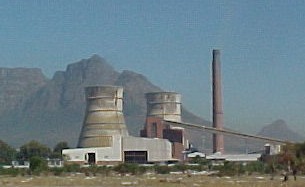


 |
||||||||
 |
|
|||||||
|
|
||||||||
 |
 |
|||||||||||
|
|
||||||||||||
|
Thickness of deposit |
1mm |
2mm |
3mm |
|
Reduction in heat transfer coefficient |
10% |
25% |
45% |
|
Increase in fuel consumption |
2.5% |
4.5% |
8.5% |
Trials conducted with the assistance of British Coal demonstrated that using SAPEC fuel treatment could produce the following results
- reduce deposit build up from 2.5mm to 0.5mm
- reduce carbon deposit content from 19% to 6.8%
- increase the period between cleaning from 330 hours to 700 hours
Controlled test ash analysis using the SAPEC fuel treatment demonstrated:
- Existing bonded deposits became detached from flue-side heat transfer surfaces and were easy to remove
- No bonded deposits were formed on the flue-side heat transfer surfaces subsequent to SAPEC treatment
- Deposits in the SAPEC boiler were softer and lighter in colour than those in the untreated boiler
- The carbon content of the deposits were as much as 64% lower in the SAPEC treated boiler than in the control boiler
- Clinker formations in the ash did not fuse into hard slag and broke up easily
- SAPEC treated boilers doubled operating periods yet still had a minimum of 50% less deposition on the heat transfer surfaces

In South Africa, SAPEC has helped users achieve grade A performance from grade B coals. This can represent a cost reduction of up to 25% with no difference in calorific output.
In one major UK manufacturer, boiler operating periods were increased by 50% as a direct result of using SAPEC.
 |
||
 |
|
|
|
|
||


